Open position G and its movable form and variations.
Available for Premium Site Access Plans Only
Sorry, can't give it ALL away!
This content requires a Premium / Gold Access Plan or enrolled in the Study with Curt - On-line or Private Lesson Program.
To view additional content for this page you'll need to either Sign In or Register or Upgrade to a Premium Site Access Plan .
Open Position

Movable Form

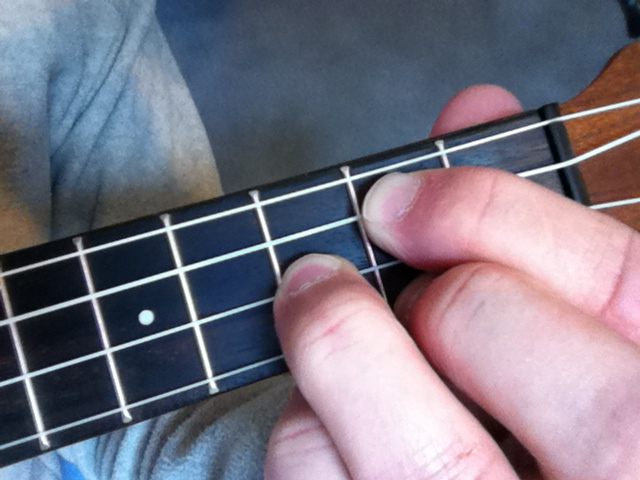
Open Position Fingering
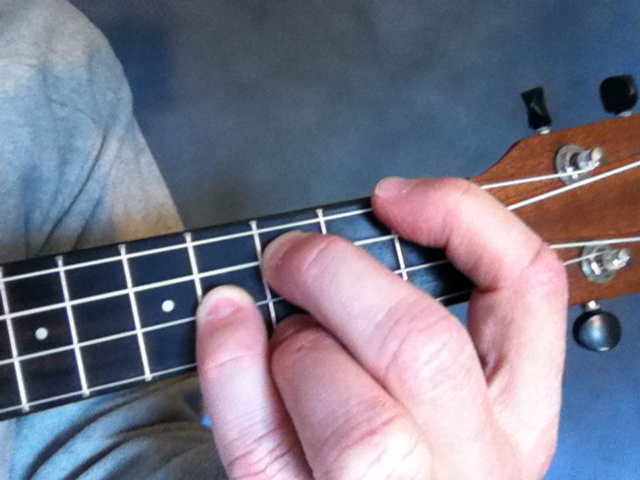
Movable Form Fingering
Checkout the Learn a Chord a Day lessons for Open Position G for all the information you can get from a chord.
Note Regarding Chord Photos
Photos of chords cannot typically show efficient fingering as comprises need to be made to show only the fingers playing or fretting notes.
Fingers should remain over the fingerboard even when not playing notes — ready to go, which typically does not make for a good photo.
Transposing Movable Form Chords
These lessons use the root of a chord to transpose to different keys.

Root and Perceived Root
Determine what string the root is on or would be on if not present (perceived root) in the chord's voicing.
Chord Transposition Chart
This transposition chart can be used for any chord where the root, or letter name of the chord is on the E string .
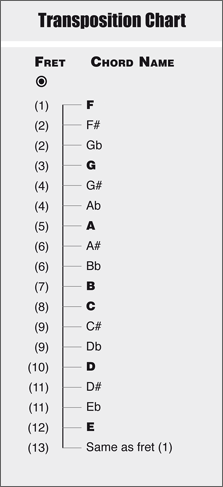
The root is on string 2, the E string.

![]() A larger sized transposition chart is available in the Ukulele Chords book. This
is the book these expanded chord lessons are based on.
A larger sized transposition chart is available in the Ukulele Chords book. This
is the book these expanded chord lessons are based on.
Chord Tones – G B D
The chord tones of a G major chord are the 1st, 3rd and 5th scale degrees of the G Major Scale ( G A B C D E F# G' ).


- 1 – the Root or letter name of G is G
- 3 – the third of G is B
- 5 – the fifth of G is D
Two Roots?

In the open position and movable forms of this chord there are two possible locations for the root or letter of the chord.
String four and string two both contain the root of the chord and can used for transposition purposes.
Movable Chord Forms

Movable chord forms are chords containing no open strings. These chords can be transposed to different keys by moving each note of the chord the same number of frets up and down the neck.
Movable form chords allow you to play in any key and transpose chords, progressions, and songs to any key. From basic movable form chords, more advanced chords can be created.
The functional range of a movable chord depends on the ukulele's size (soprano, concert, or tenor), the number of frets to the body (10, 12, 14, etc.) and whether you have a cut-away for access to higher frets. Not all chords can be transposed a complete octave (12 frets).
Movable form chords can be used along with open-position chords. As you learn more movable form chords, you'll have a variety of alternate voicings for any given chord.
Movable form chords can be transposed up and down the fingerboard using the root of the chord and a transposition chart, or through knowledge of the names of the notes on the fingerboard.
Movable Form Chord - Alternate Voicing
This alternate voicing is the open position F chord from lesson 3 and might be a bit easier to finger when first learning the ukulele.
_v2.png)
Chord Fingering
Chord fingering is dependent on several factors. The chord you're currently on, the previous chord, the next chord, your hand, and fingers. All chord fingerings shown are recommended fingerings and not mandatory. Most chords have alternate fingerings dependent on the context. The same chord might even be fingered one way in one part of a song or progression and an alternate fingering in another part.
Derived Chords
sus or suspended Chords
A sus chord implies the suspension of the third of a major, minor or seventh chord. The most common and historical use of this suspension involves raising the third of a major or seventh chord to the fourth for a sus4, or 7sus4. In some contemporary music, the suspension can also be accomplished by lowering the third of a major or minor chord to a second for a
The term is borrowed from the contrapuntal technique of suspension, where a note from a previous chord is carried over to the next chord, and then resolved down to the third or tonic, suspending a note from the previous chord. However, in modern usage, the term concerns only the notes played at a given time; in a suspended chord, the added tone does not necessarily resolve and is not necessarily "prepared" (i.e., held over) from the prior chord.
Technically a sus2 is not really chord as in traditional harmony a sus or suspension only referred to the third of the chords. So, really a sus2 is most likely a power 5 without a third and with an added 2. And, another chord
that, at its foundation is not a chord but a DYAD.
add2/add9 Chords
Technically the add 2 and add 9 are different chords.
Both the 2 and the 9 are the same letters but in different octaves of the scale. On ukulele, for all practical purposes, you can treat both the add2 and add9 chords as the same. Depending on whether you are using a low "G" or high "G", C tuning the added ninth might be a second. Whether you call it an add9 or add2 depends on whether the added note is in the same octave as the root of the chord.
Related to a C Major Scale a D is both a 2nd and a 9th (shown to the right). All depends on where the root is.

Power Five Chords
A Power 5 chord contains the root and fifth of a major scale with an optional octave of the root added for a three note power 5 chord. A power 5 chord is technically not a chord in the traditional sense but a dyad or interval. It's more of an implied chord sometimes major and sometimes minor.
Chord Progressions
Random chord sequence to get you moving around the neck.
.png)
If your ukulele does not allow access to the higher frets for a particular chord, then substitute another movable form chord lower down the neck or an open position chord.
PRACTICE NOTE: To gain the most from these chord lessons and the practice progressions, memorize the location of each chord and the name of the chord.
I've pulled this trick question on a few of my private students after they have played a chord in a lesson. Typically this happens at the beginning of a lesson before we actually get into the lesson. I'll ask them to play a chord that I just saw them play. I'll say; "Play a D chord." Some will say they don't know chord so and so and yet it's a chord they just played. Don't let a chord get lost in a particular song or progression. Know its name and it belongs to you for using elsewhere.
Related Lessons, Videos, Lesson Series, Songs, Books & Reference Charts, Resources & Assets, Workshops are below.

Finally, learn the names of the notes of the ukulele fingerboard in C tuning .

Learn the six fingering principles to navigating the ukulele fingerboard. Fingering is one of the most universal topics. Book: Six Secrets of the Ukulele Fingering

Harmonic Analysis is the understanding of the functional sequence of chords. It is the process used to analyze the harmonic structure of a progression, song or composition. Book: Harmonic Analysis for Scale Selection and Chord Substitution

Learn to read single note melodies in the first/open position is a lot easier than you might think. Book: Ukulele – Reading Music Series – Primer

An organized collection of daily practice and reference material for the contemporary ukulele player for developing the vocabulary and knowledge necessary for single note playing. Book: Daily Practice Material for the Contemporary Ukulele
Checkout the Books & Reference Charts for additional Handy, Dandy Reference Charts.

Ukulele Fingerboard Chart for C Tuning, Low or High G – G C E A

Ukulele Fingerboard Chart for G Tuning, Low or High A – D G B E

A handy reference chart of all 15 major and relative minor key signatures. US Letter 8.5 x 11 sized (ANSI-A), A4
Checkout the Books & Reference Charts for additional Handy, Dandy Reference Charts.



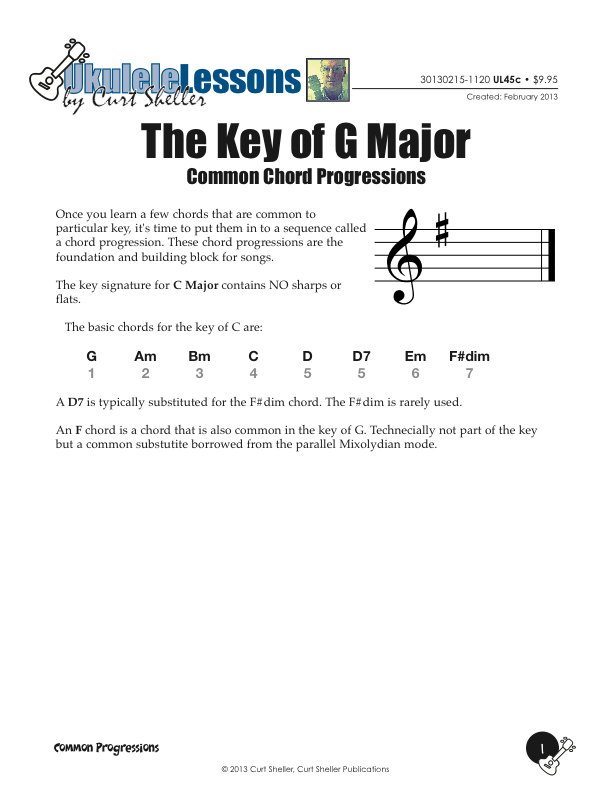



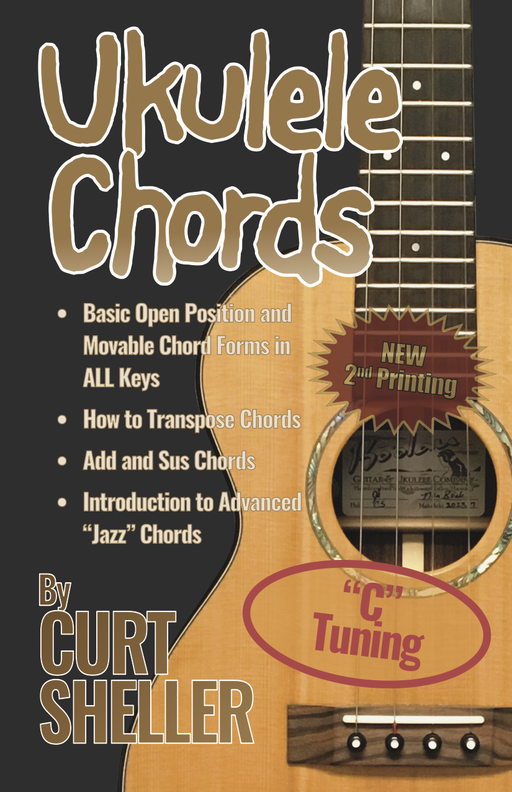
.jpg)